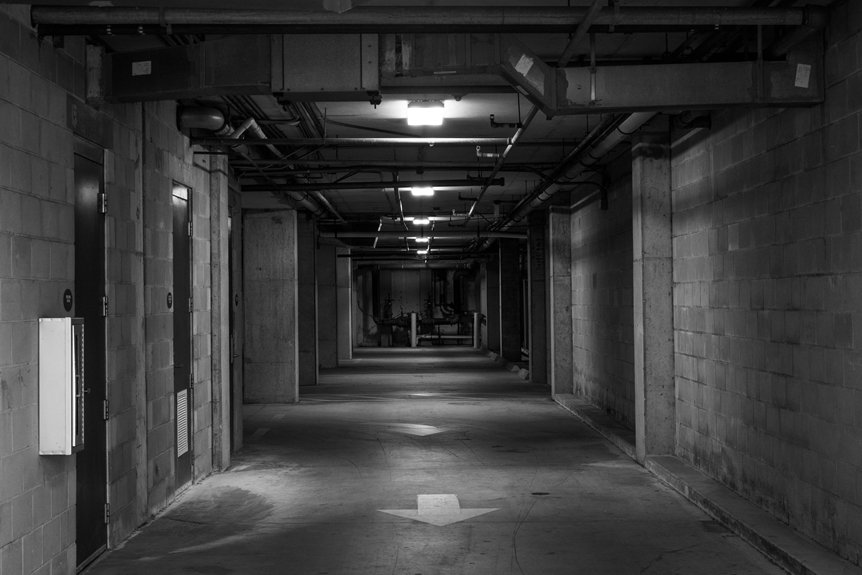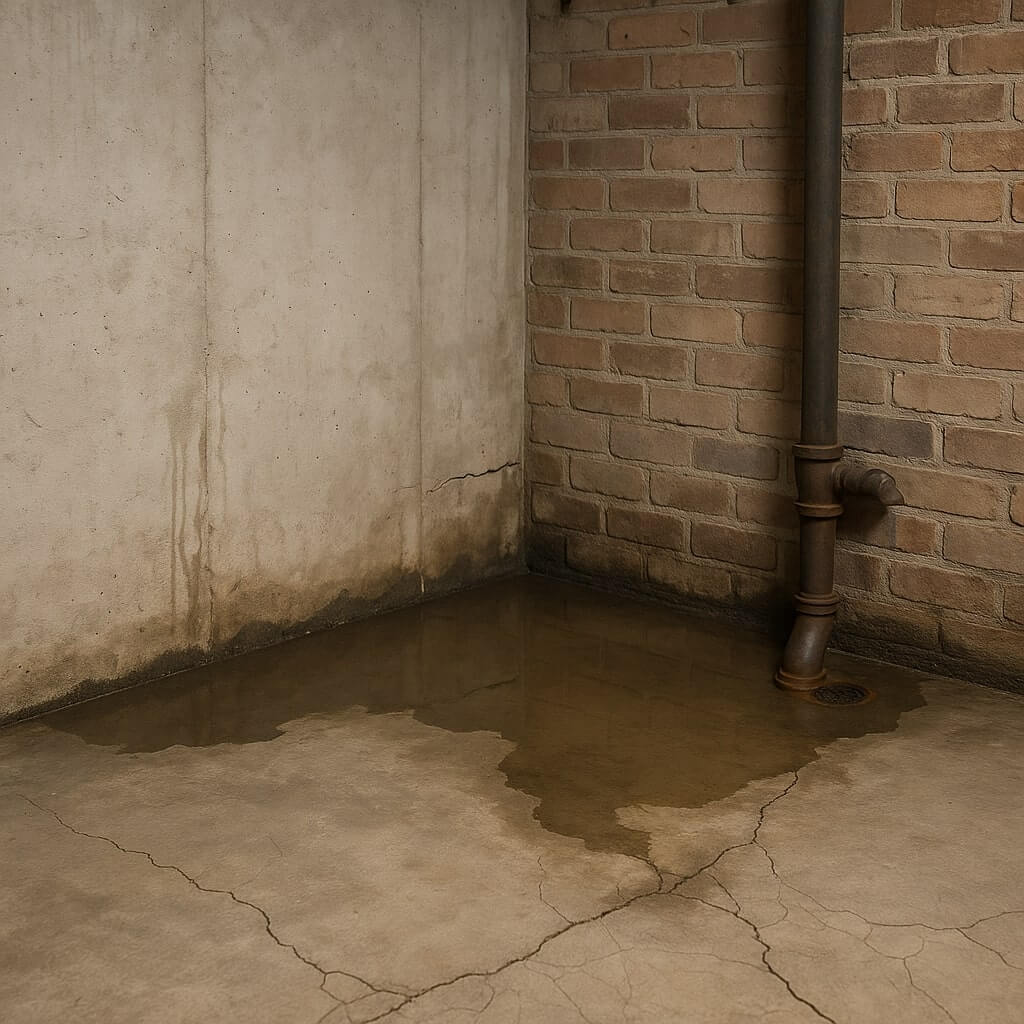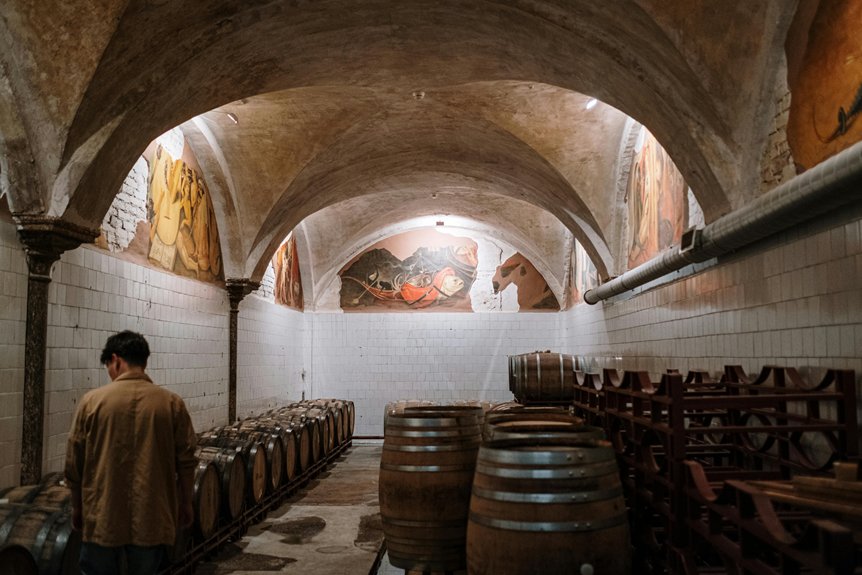If you’re considering waterproof basement wall panels, you’re on the right track to protecting your home from moisture damage. These panels not only prevent mold growth but also enhance insulation, making your basement more comfortable. However, choosing the right type and ensuring proper installation can be tricky. Are you aware of the various materials available and what suits your needs best? Let’s explore the essential aspects of waterproof panels to help you make an informed decision.
Key Takeaways
- Waterproof basement wall panels protect your home from moisture damage and enhance livability.
- Available materials include lightweight fiberglass and durable PVC, each with unique benefits.
- Proper installation involves cleaning the area, assessing moisture, and sealing seams effectively.
- Regular maintenance, including inspections and humidity control, extends the lifespan of the panels.
- Choose designs, colors, and textures that complement your decor while ensuring functionality.
Understanding Waterproof Basement Wall Panels
When you’re looking to protect your home from moisture damage, understanding waterproof basement wall panels is essential.
These panels utilize advanced waterproof technology to create effective moisture barriers, preventing water from seeping through your walls. They come in various materials, each designed to offer superior protection against humidity and leaks.
By installing these panels, you’re not just safeguarding your basement; you’re also enhancing your home’s overall value and livability.
Types of Waterproof Wall Panels
Choosing the right waterproof wall panels is key to ensuring your basement stays dry and protected. Two popular options are fiberglass panels and PVC panels. Fiberglass panels are lightweight, resistant to mold, and easy to install. On the other hand, PVC panels are durable, waterproof, and come in a variety of designs.
Here’s a quick comparison:
| Panel Type | Durability | Installation Ease |
|---|---|---|
| Fiberglass Panels | High | Easy |
| PVC Panels | Very High | Moderate |
Benefits of Installing Waterproof Panels
Installing waterproof panels in your basement not only protects against moisture but also enhances the overall livability of the space.
These panels offer excellent moisture resistance, keeping your basement dry and preventing mold growth. By reducing moisture levels, you’ll maintain the structural integrity of your home, safeguarding it from costly repairs.
Additionally, waterproof panels can improve insulation, making your basement more energy-efficient. With a variety of designs available, you can customize the look while ensuring functionality.
Ultimately, choosing waterproof panels is a smart investment that boosts comfort and protects your property for years to come.
Factors to Consider When Choosing Panels
Selecting the right waterproof panels for your basement involves several important factors that can greatly impact both functionality and aesthetics.
First, consider panel durability; you want materials that withstand wear and tear over time. Look for panels with a robust construction that can handle moisture and resist mold growth.
Consider durability when choosing waterproof panels; opt for robust materials that resist moisture and mold for lasting performance.
Next, evaluate moisture resistance; panels should effectively block water infiltration to keep your basement dry.
Additionally, think about the design and finish that will complement your space.
Installation Process for Waterproof Wall Panels
Before you start installing waterproof wall panels, you’ll want to prepare your basement area to guarantee a smooth process.
Understanding the best panel installation techniques will make a significant difference in the outcome, and don’t forget the importance of sealing and finishing touches to protect against moisture.
Let’s explore these essential steps to achieve a successful installation.
Preparing the Basement Area
As you prepare the basement area for waterproof wall panels, it’s important to confirm the space is clean and dry.
Start with a thorough basement cleanup; remove any clutter, debris, and old materials that could interfere with the installation.
Next, conduct a moisture assessment to identify any damp spots or water leaks. Fix these issues before proceeding, as a dry environment is vital for the panels’ effectiveness.
Consider using dehumidifiers or fans to enhance airflow.
Once you’ve verified the area is both clean and moisture-free, you’re ready to move forward with the installation process confidently.
Panel Installation Techniques
Once you’ve confirmed the basement is clean and dry, you can plunge into the installation of waterproof wall panels.
Start by choosing the right installation methods, such as adhesive or mechanical fasteners, depending on your panel type. Measure the wall space and cut the panels accordingly for a precise fit.
As you position each panel, focus on panel alignment to guarantee they sit flush against the wall. Use a level to keep everything straight and adjust as needed.
Secure each panel firmly, and double-check your work for consistency. This careful approach will set the stage for a successful waterproofing project.
Sealing and Finishing Touches
After securing your waterproof wall panels, it’s essential to focus on sealing and finishing touches to guarantee peak performance.
Start with effective sealing techniques, making sure joints and seams are properly caulked to prevent moisture infiltration. Use high-quality sealants designed for wet environments to enhance durability.
Next, choose suitable finishing materials like moisture-resistant paint or trim to give your basement a polished look. These finishing touches not only improve aesthetics but also provide additional protection against moisture.
Maintenance Tips for Longevity
To guarantee your waterproof basement wall panels stand the test of time, regular maintenance is key.
Begin with routine inspections; check for any signs of wear, such as cracks or discoloration. For ideal panel care, clean the surfaces with a mild detergent and soft cloth to prevent buildup.
Additionally, confirm proper moisture control by monitoring humidity levels in your basement—aim for around 30-50%. Consider using a dehumidifier if necessary.
Finally, address any leaks or water issues promptly to protect your panels. With these simple maintenance tips, you can extend the life of your waterproof basement wall panels considerably.
Common Myths About Waterproof Panels
Have you ever wondered what the truth is behind waterproof basement wall panels? Let’s explore some common panel misconceptions and engage in a little myth debunking:
Explore the truth behind waterproof basement wall panels and uncover common misconceptions about their effectiveness.
- They’re completely waterproof – No panel is entirely waterproof; they resist moisture but don’t eliminate it.
- Installation is unnecessary – Proper installation is essential for effectiveness; don’t skip this step.
- They prevent mold entirely – While they help, you still need ventilation and maintenance to combat mold.
- They only work in dry climates – Waterproof panels can be effective anywhere, as long as they’re installed correctly.
Understanding these points can help you make informed decisions!
Cost Considerations and Budgeting
When you’re considering waterproof basement wall panels, it’s crucial to factor in the overall cost and budgeting for your project.
Start with budget planning to determine how much you can afford to spend. Conduct a thorough cost analysis of the materials and installation. Prices can vary greatly based on the type of panel and the complexity of the job.
Don’t forget to include potential additional expenses like insulation or finishing touches. By setting a clear budget and understanding costs upfront, you’ll make informed decisions that fit your financial situation while achieving a dry, functional basement.
Enhancing Aesthetics With Wall Panels
When you think about waterproof basement wall panels, consider the stylish design options available to transform your space.
With a variety of colors and textures to choose from, you can easily create an inviting atmosphere that reflects your personal style.
Elevating the aesthetics of your basement not only enhances its appeal but also increases your home’s overall value.
Stylish Design Options
How can you transform your basement into a stylish haven while ensuring it stays dry and protected?
With waterproof wall panels, you can effortlessly blend functionality with aesthetics.
Explore these modern trends and design combinations to elevate your space:
- Bold Patterns: Choose geometric or floral prints for a unique look.
- Textured Finishes: Incorporate panels that mimic wood or stone for warmth.
- Integrated Lighting: Use recessed lighting to highlight your wall designs.
- Color Coordination: Pair panels with your existing décor for a cohesive feel.
These stylish options not only guard against moisture but also enhance your basement’s charm!
Color and Texture Choices
Choosing the right colors and textures for your waterproof basement wall panels can dramatically impact the overall aesthetic of the space. Keeping up with color trends and exploring texture variations can help create a welcoming environment.
Here’s a quick reference table to guide your choices:
| Color Trends | Texture Variations |
|---|---|
| Soft neutrals | Smooth finish |
| Bold accents | Textured surface |
| Earthy tones | Matte finish |
| Pastels | Wood-like texture |
When to Seek Professional Help
If you notice persistent moisture, peeling paint, or mold growth on your basement walls, it’s time to contemplate getting professional help.
A professional assessment can save you time and money by addressing issues before they worsen.
Here are four signs that indicate you need expert assistance:
- Uncontrollable moisture in multiple areas.
- Severe mold growth, impacting your health.
- Cracks or bulges in the walls.
- Delayed project timeline due to lack of expertise.
Don’t hesitate to reach out to professionals who can provide effective solutions and guarantee your basement remains dry and safe for years to come.
Conclusion
Ultimately, waterproof basement wall panels are a smart investment for protecting your home from moisture and enhancing its value. By understanding the types, benefits, and installation processes, you can make informed choices that suit your needs. Don’t forget to take into account aesthetics and maintenance to guarantee your basement remains functional and appealing. Whether you DIY or hire a pro, these panels can transform your space and provide lasting protection.




